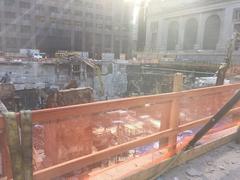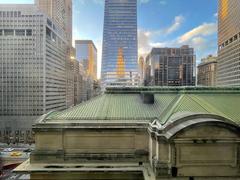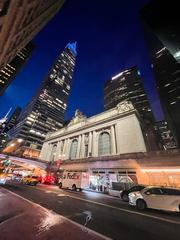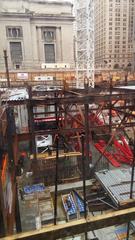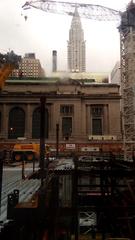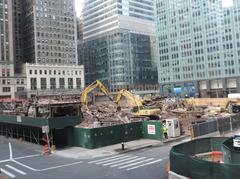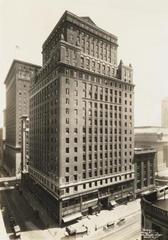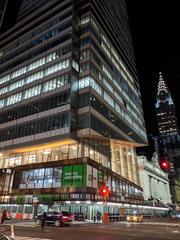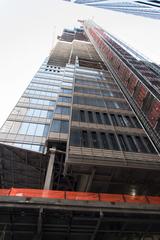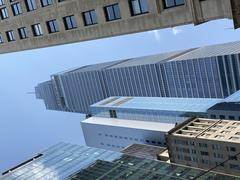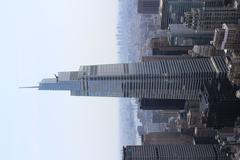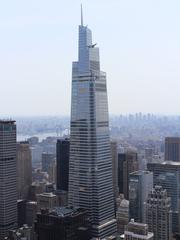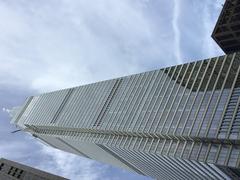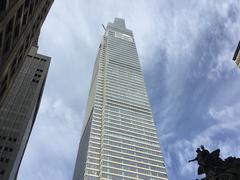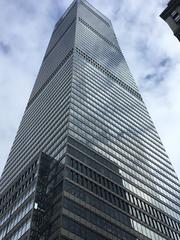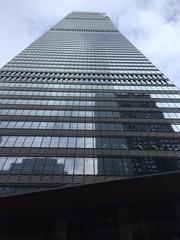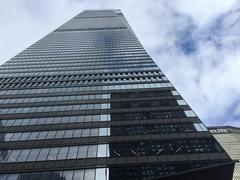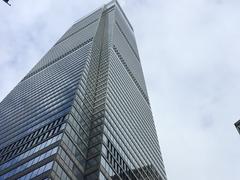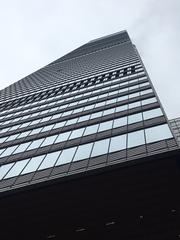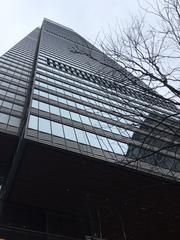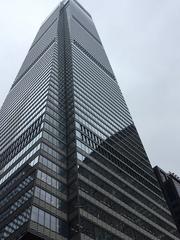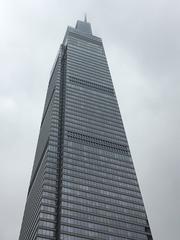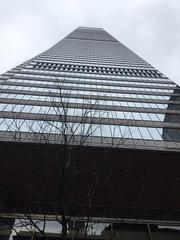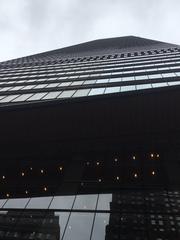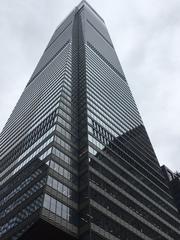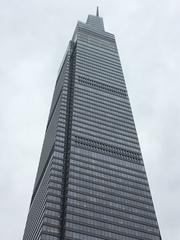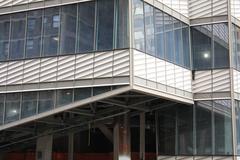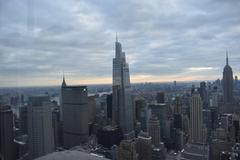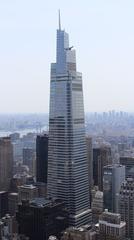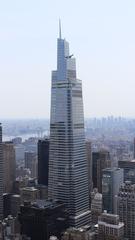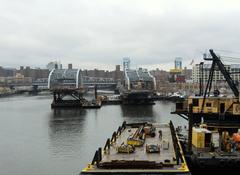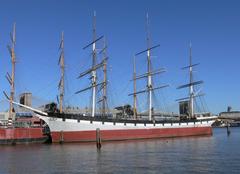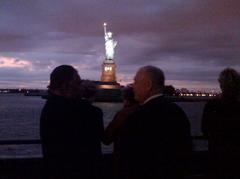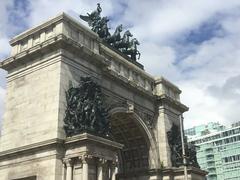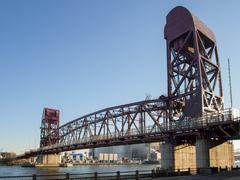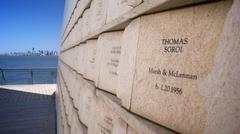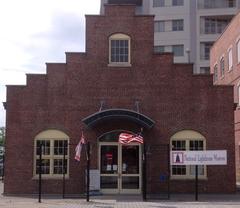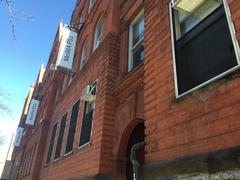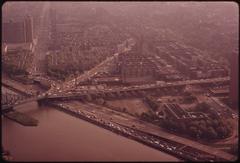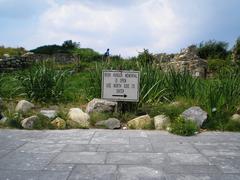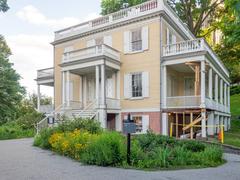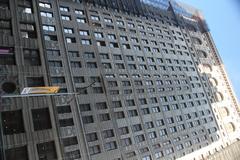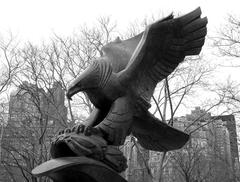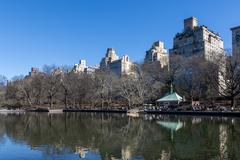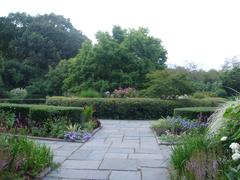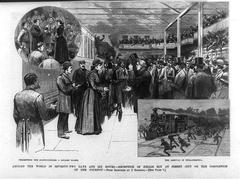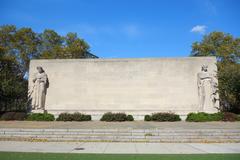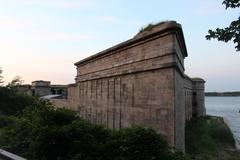
One Vanderbilt Visiting Hours, Tickets, and Travel Tips in New York City
Date: 17/07/2024
Introduction
One Vanderbilt, a towering symbol of modern architecture and urban revitalization, has become an integral part of New York City’s iconic skyline since its completion in 2020. Nestled adjacent to the historic Grand Central Terminal, One Vanderbilt is not just a skyscraper; it represents a confluence of innovative design, economic vitality, and cultural significance. Conceived in the early 2010s by SL Green Realty Corp., this architectural marvel was designed by the renowned firm Kohn Pedersen Fox Associates (KPF) to address the growing demand for premium office space and to spearhead the revitalization of Midtown Manhattan (ArchDaily). The project received robust support from city officials, including then-Mayor Michael Bloomberg, as part of the East Midtown rezoning plan aimed at fostering economic growth and development.
Standing at 1,401 feet, One Vanderbilt is the fourth tallest building in New York City and the tallest in Midtown Manhattan. Its sleek, tapering form, combined with sustainable features, sets a new benchmark for skyscraper design. The construction, which began in 2016, was notable for its complexity and scale, involving significant infrastructure improvements to benefit the surrounding area, particularly Grand Central Terminal. These enhancements included new entrances, expanded concourses, and improved commuter connections, funded by a $220 million commitment from SL Green Realty Corp. (Urban Land Institute).
This comprehensive guide aims to provide potential visitors with detailed information on One Vanderbilt, covering its history, architectural significance, visiting hours, ticket information, travel tips, and its broader economic and cultural impact. Whether you’re planning your first visit or returning for another experience, this guide will help you navigate all that One Vanderbilt has to offer.
Table of Contents
- [History of One Vanderbilt](#history-of-one-vanderbilthistory-of-one-vanderbilt)
- [Conception and Planning](#conception-and-planningconception-and-planning)
- [Architectural Design and Features](#architectural-design-and-featuresarchitectural-design-and-features)
- [Construction and Development](#construction-and-developmentconstruction-and-development)
- [Visitor Information](#visitor-informationvisitor-information)
- [Visiting Hours and Tickets](#visiting-hours-and-ticketsvisiting-hours-and-tickets)
- [Travel Tips and Accessibility](#travel-tips-and-accessibilitytravel-tips-and-accessibility)
- [Special Events and Guided Tours](#special-events-and-guided-toursspecial-events-and-guided-tours)
- [Economic and Cultural Impact](#economic-and-cultural-impacteconomic-and-cultural-impact)
- [Legacy and Future Prospects](#legacy-and-future-prospectslegacy-and-future-prospects)
- [Frequently Asked Questions (FAQ)](#frequently-asked-questions-faqfrequently-asked-questions-faq)
- [Conclusion](#conclusionconclusion)
- [References](#referencesreferences)
History of One Vanderbilt
Conception and Planning
One Vanderbilt, a striking addition to the New York City skyline, was conceived as part of a broader initiative to revitalize the area around Grand Central Terminal. The idea for the skyscraper emerged in the early 2010s, driven by the need to modernize Midtown Manhattan’s aging office infrastructure and to accommodate the growing demand for premium office space. The project was spearheaded by SL Green Realty Corp., one of New York City’s largest commercial property owners.
The initial proposal for One Vanderbilt was unveiled in 2012, and it quickly garnered attention for its ambitious design and strategic location. The building was envisioned not just as a commercial hub but also as a catalyst for urban renewal, enhancing the connectivity and aesthetic appeal of the surrounding area. The project received significant support from city officials, including then-Mayor Michael Bloomberg, who saw it as a key component of the East Midtown rezoning plan aimed at fostering economic growth and development.
Architectural Design and Features
Designed by the renowned architectural firm Kohn Pedersen Fox Associates (KPF), One Vanderbilt stands out for its sleek, modern design and innovative features. The building’s architecture reflects a blend of contemporary aesthetics and functional efficiency, with a focus on sustainability and environmental responsibility. The tower rises to a height of 1,401 feet (427 meters), making it the fourth tallest building in New York City as of 2024.
One Vanderbilt’s design includes several notable elements, such as its tapered form, which allows for a series of terraced setbacks that create outdoor spaces and enhance the building’s visual appeal. The façade is clad in glass and metal, providing a reflective surface that changes appearance with the shifting light and weather conditions. The building also incorporates advanced engineering techniques to ensure structural stability and resilience, including a high-performance curtain wall system and state-of-the-art mechanical systems.
Construction and Development
The construction of One Vanderbilt began in 2016, following a series of approvals and negotiations with various stakeholders, including the Metropolitan Transportation Authority (MTA) and local community groups. The project was notable for its complexity and scale, involving extensive coordination and logistical planning to minimize disruptions to the surrounding area, particularly Grand Central Terminal.
One of the key aspects of the construction process was the integration of significant infrastructure improvements, including enhancements to the subway and commuter rail systems. SL Green Realty Corp. committed over $220 million to transit upgrades, which included new entrances, expanded concourses, and improved connections to the terminal. These improvements were designed to alleviate congestion and enhance the overall commuter experience, aligning with the broader goals of the East Midtown rezoning plan.
The construction of One Vanderbilt was completed in September 2020, marking a significant milestone in the transformation of Midtown Manhattan. The building officially opened on September 14, 2020, with a ribbon-cutting ceremony attended by city officials, business leaders, and community representatives.
Visitor Information
Visiting Hours and Tickets
One Vanderbilt offers a range of visiting hours to accommodate tourists and locals alike. The observation deck, known as “The Summit,” is open daily from 9:00 AM to 11:00 PM, providing ample opportunity to take in the breathtaking views of New York City. Tickets can be purchased online or at the entrance, with prices varying depending on the time of day and type of experience. General admission tickets start at $39 for adults and $33 for children aged 6-12. Special packages, including VIP access and guided tours, are also available (SUMMIT One Vanderbilt Tickets).
Travel Tips and Accessibility
One Vanderbilt is conveniently located near Grand Central Terminal, making it easily accessible by subway, bus, and commuter rail. Visitors are encouraged to use public transportation to avoid the hassle of parking in Midtown Manhattan. The building is fully accessible, with elevators and ramps available for those with mobility challenges. Additionally, strollers and wheelchairs are permitted on the observation deck, ensuring a comfortable experience for all guests.
Special Events and Guided Tours
Throughout the year, One Vanderbilt hosts a variety of special events, including seasonal celebrations, art exhibitions, and live performances. Guided tours are available for those interested in learning more about the building’s history, architecture, and engineering. These tours offer a unique behind-the-scenes look at the construction and design of One Vanderbilt, providing valuable insights into its role in the city’s development.
Economic and Cultural Impact
Since its opening, One Vanderbilt has had a profound impact on the economic and cultural landscape of New York City. The building has attracted a diverse array of tenants, including major financial institutions, law firms, and technology companies, contributing to the area’s economic vitality and reinforcing Midtown Manhattan’s status as a global business hub.
One Vanderbilt has also played a role in shaping the cultural fabric of the city, with its public spaces and amenities designed to foster community engagement and interaction. The building features a range of dining options, retail spaces, and art installations, creating a vibrant and dynamic environment for both tenants and visitors. Additionally, the observation deck, known as “The Summit,” offers breathtaking views of the city and has become a popular attraction for tourists and locals alike (SUMMIT One Vanderbilt).
Legacy and Future Prospects
Looking ahead, One Vanderbilt is poised to remain a key fixture in New York City’s skyline and a symbol of the city’s resilience and innovation. The building’s emphasis on sustainability and environmental stewardship sets a benchmark for future developments, with features such as energy-efficient systems, green roofs, and LEED certification highlighting its commitment to reducing its ecological footprint (US Green Building Council).
One Vanderbilt’s success has also paved the way for further development in the East Midtown area, with several new projects in the pipeline aimed at enhancing the district’s appeal and functionality. As New York City continues to evolve and adapt to changing economic and social dynamics, One Vanderbilt stands as a testament to the power of visionary planning and collaborative effort in shaping the urban landscape.
Frequently Asked Questions (FAQ)
Q: What are the visiting hours for One Vanderbilt?
A: The Summit observation deck is open daily from 9:00 AM to 11:00 PM.
Q: How much do tickets to One Vanderbilt cost?
A: General admission tickets start at $39 for adults and $33 for children aged 6-12. Special packages are also available.
Q: Is One Vanderbilt accessible for visitors with disabilities?
A: Yes, the building is fully accessible with elevators and ramps available for those with mobility challenges.
Q: Are guided tours available at One Vanderbilt?
A: Yes, guided tours are available and offer valuable insights into the building’s history, architecture, and engineering.
Q: How can I get to One Vanderbilt?
A: One Vanderbilt is conveniently located near Grand Central Terminal, making it easily accessible by subway, bus, and commuter rail.
Conclusion
One Vanderbilt stands as a testament to New York City’s enduring spirit of innovation and resilience. Since its opening, it has significantly impacted the economic and cultural landscape of Midtown Manhattan. The building not only houses major financial institutions and technology companies but also enhances the public realm with its integration of public spaces, dining options, and art installations (NYC Economic Development Corporation). The observation deck, SUMMIT One Vanderbilt, offers breathtaking views and immersive experiences, making it a popular attraction for both tourists and locals.
The success of One Vanderbilt has paved the way for future developments in the East Midtown area, reinforcing New York City’s status as a global business hub. Its emphasis on sustainability, with features such as LEED Gold certification and energy-efficient systems, sets a benchmark for future skyscrapers (US Green Building Council). As New York City continues to evolve, One Vanderbilt will remain a key fixture in its skyline, symbolizing the city’s commitment to progress and innovation. Plan your visit today to experience all that One Vanderbilt has to offer, from its architectural marvels to its cultural and economic contributions. For the latest events and updates, follow us on social media or download the Audiala mobile app.
References
- ArchDaily. (n.d.). One Vanderbilt. https://www.archdaily.com/
- NYC Economic Development Corporation. (n.d.). One Vanderbilt Economic Impact. https://www.nycedc.com/
- Urban Land Institute. (n.d.). One Vanderbilt Urban Integration. https://uli.org/
- US Green Building Council. (n.d.). One Vanderbilt LEED Certification. https://www.usgbc.org/
